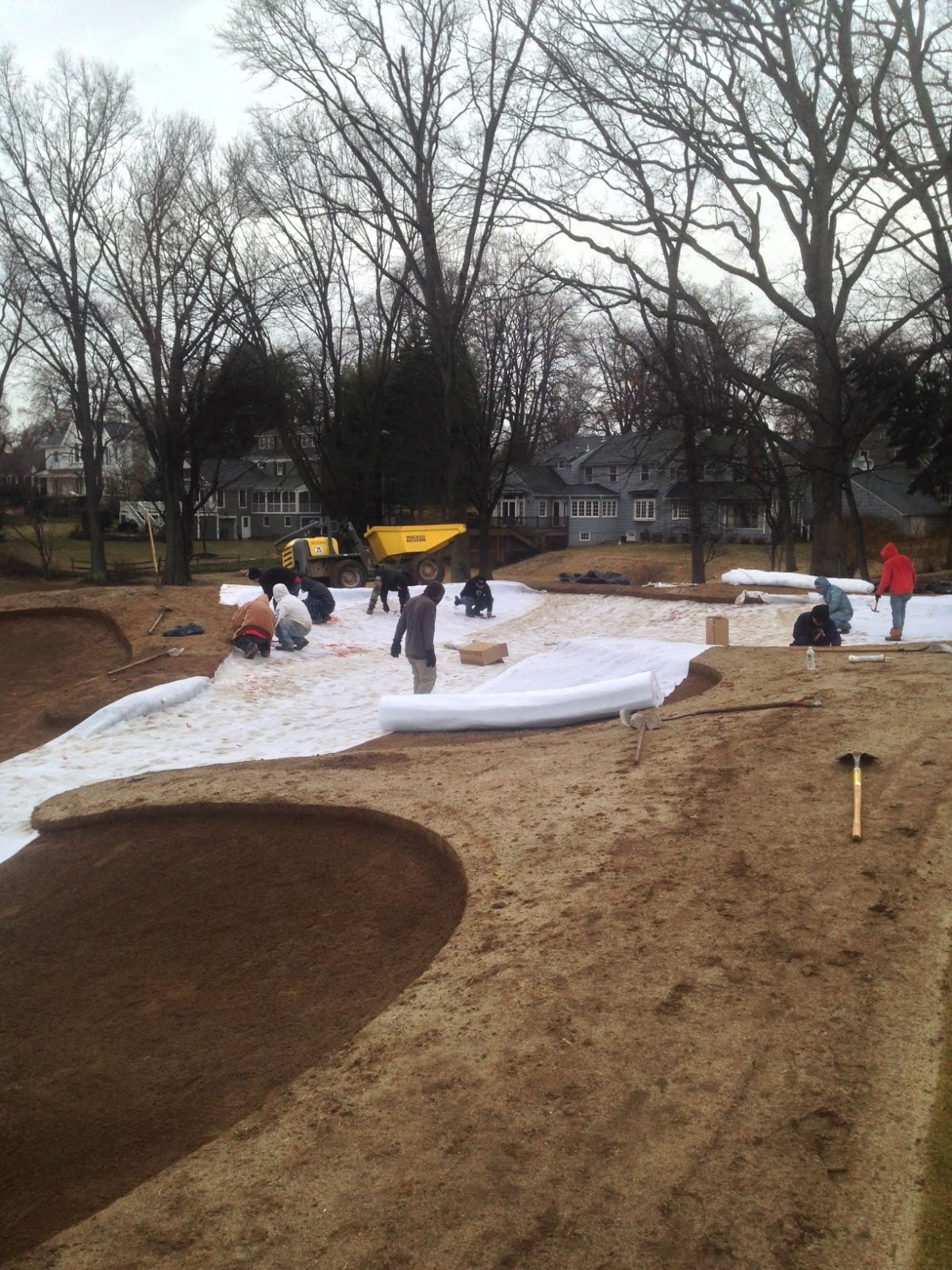We have begun to overhaul the equipment in the shop by generating work orders for each piece of equipment and completing these services in logical order to free up room in the shop for service on our larger pieces of equipment. We have 18 individual reels to disassemble, make repairs, reassemble, and grind along with all of the traction units including filters, brakes, tire repair, etc. We are very fortunate to have one of the best equipment managers in the business that works for the club on a part-time basis, Mike brings over 25 years of experience from very high profile clubs to MGC.
I would to thank all of the members that contributed to the holiday fund this year as I distributed the checks to the crew yesterday and they were really blown away by the generosity of the members as was I. The crew and I would like to wish everyone a Merry Christmas and a Happy New Year.
 |
| 7 Green Covered for the Winter |


















































